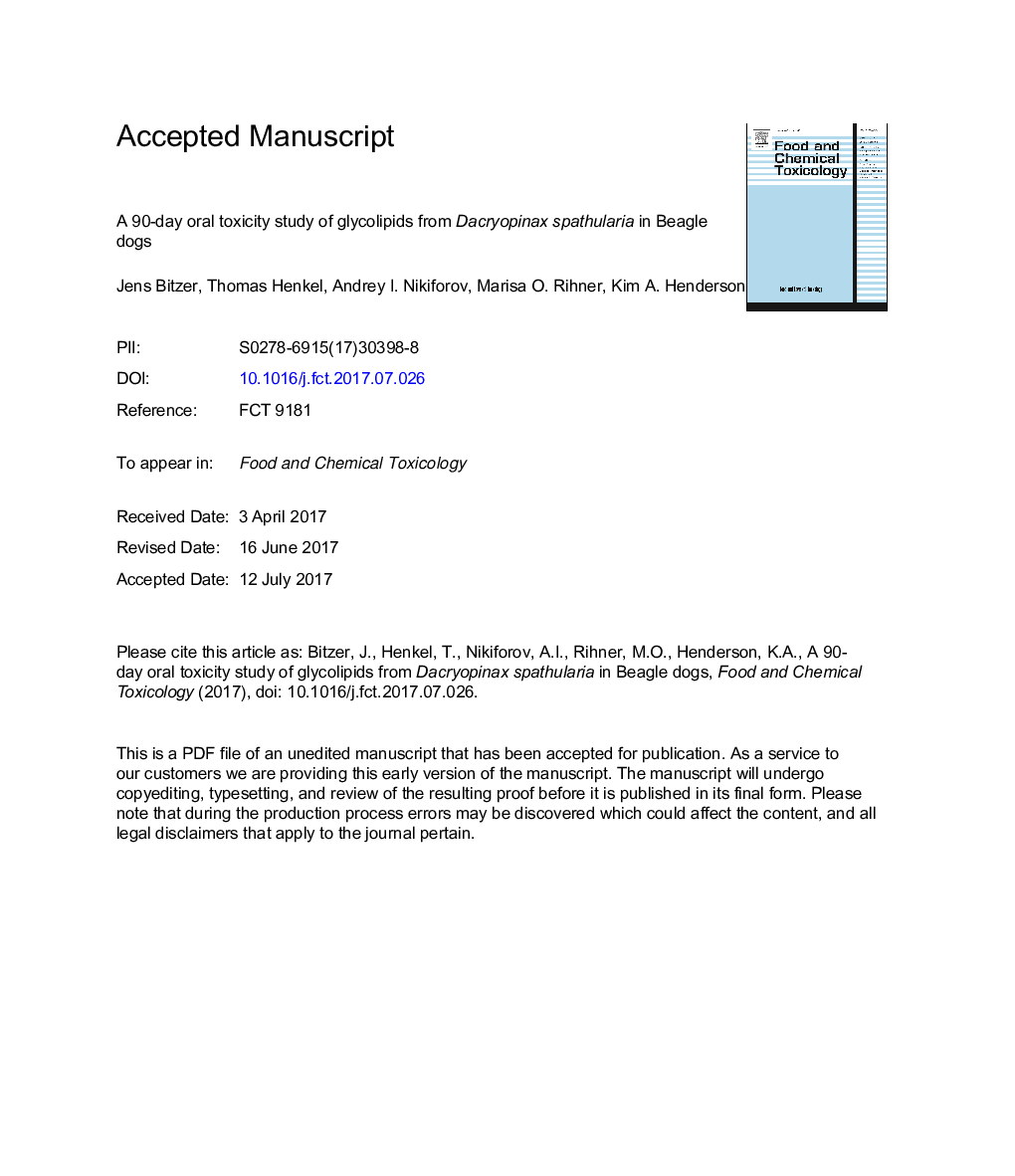| Article ID | Journal | Published Year | Pages | File Type |
|---|---|---|---|---|
| 10998182 | Food and Chemical Toxicology | 2017 | 32 Pages |
Abstract
The subchronic toxicity of glycolipids from Dacryopinax spathularia (herein referred to as “AM-1”) was studied in male and female Beagle dogs administered AM-1 by oral capsule at doses of 150, 500 or 1000Â mg/kg/day for 90 days. AM-1 was well tolerated at all dosages and there were no test article-related effects on survival, clinical observations, neurological screening (functional observational battery) parameters, clinical pathology parameters, organ weights, macroscopic or microscopic evaluations. Test article-related changes were limited to minimal effects on food consumption and body weight changes in the 1000Â mg/kg/day group females. Therefore, the no-observed-adverse-effect level (NOAEL) was considered to be 1000Â mg/kg/day, the highest dosage level tested. These results add to the safety database for these naturally derived jelly mushroom glycolipids with potential for use as a food ingredient.
Keywords
RBCMCHCFOBHDWNOAELOECDALTHCDSOPsRDWHCTLCFAGGTFDAMCVASTAspartate aminotransferaseAlanine aminotransferaseALPAlkaline phosphataseU.S. Food and Drug Administrationlong chain fatty acidfunctional observation batteryanalysis of varianceANOVAMean corpuscular volumeHistorical control dataOralStandard operating proceduresOrganisation for Economic Co-operation and DevelopmentSubchronic toxicityDogRed cell distribution widthMean corpuscular hemoglobin concentrationNatural preservativehematocritHemoglobinHgbno-observed-adverse-effect levelgamma glutamyltransferasered blood cell
Related Topics
Life Sciences
Agricultural and Biological Sciences
Food Science
Authors
Jens Bitzer, Thomas Henkel, Andrey I. Nikiforov, Marisa O. Rihner, Kim A. Henderson,
